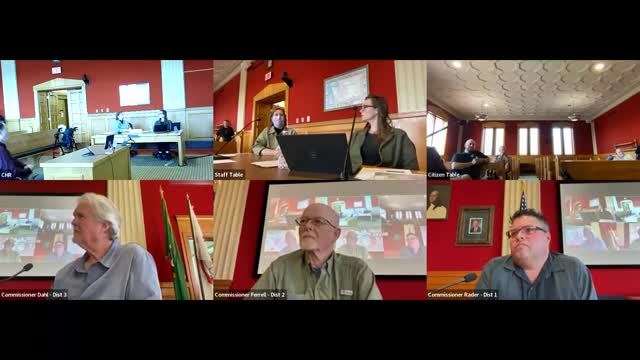Wildlife Commission implements new cougar hunting regulations to manage predator populations
April 24, 2025 | Cowlitz County, Washington
This article was created by AI summarizing key points discussed. AI makes mistakes, so for full details and context, please refer to the video of the full meeting. Please report any errors so we can fix them. Report an error »

The Cowlitz County Commissioners convened on April 23, 2025, for a business meeting and work session focused on wildlife management and regulatory updates. The discussions primarily revolved around the management of bear and cougar populations, reflecting the complexities of balancing wildlife conservation with hunting practices.
The meeting began with a review of the current bear population, which officials confirmed is healthy. There was a notable emphasis on understanding bear density and its implications for wildlife management. The commissioners acknowledged that while cougar populations have remained stable, their density can fluctuate based on prey availability and habitat changes.
A significant portion of the discussion centered on new regulations being implemented for cougar management. These regulations are informed by extensive public input and scientific research. The commissioners highlighted the importance of monitoring cougar populations through a model that incorporates various factors, including harvest data and age demographics of the animals. A key change in the regulations is the inclusion of depredation takes—instances where cougars prey on livestock—into the management model, allowing for a more comprehensive understanding of population dynamics.
Commissioners also shared anecdotal evidence from the recent hunting season, noting an increase in cougar and bear sightings, which suggests a growing presence of these predators in the area. This has raised concerns among hunters regarding the impact on elk populations, prompting discussions about potential measures to reduce predator numbers to support elk conservation efforts.
Additionally, the meeting addressed the handling of elk hooves submitted for research purposes, which are sent to Washington State University for analysis. This initiative is part of ongoing efforts to monitor wildlife health and manage populations effectively.
In conclusion, the Cowlitz County Commissioners are actively working to refine wildlife management strategies, balancing ecological health with hunting interests. The implementation of new regulations and the incorporation of public and scientific feedback are crucial steps in addressing the challenges posed by predator populations in the region. Further discussions and follow-up actions are anticipated as the commission continues to navigate these complex issues.
The meeting began with a review of the current bear population, which officials confirmed is healthy. There was a notable emphasis on understanding bear density and its implications for wildlife management. The commissioners acknowledged that while cougar populations have remained stable, their density can fluctuate based on prey availability and habitat changes.
A significant portion of the discussion centered on new regulations being implemented for cougar management. These regulations are informed by extensive public input and scientific research. The commissioners highlighted the importance of monitoring cougar populations through a model that incorporates various factors, including harvest data and age demographics of the animals. A key change in the regulations is the inclusion of depredation takes—instances where cougars prey on livestock—into the management model, allowing for a more comprehensive understanding of population dynamics.
Commissioners also shared anecdotal evidence from the recent hunting season, noting an increase in cougar and bear sightings, which suggests a growing presence of these predators in the area. This has raised concerns among hunters regarding the impact on elk populations, prompting discussions about potential measures to reduce predator numbers to support elk conservation efforts.
Additionally, the meeting addressed the handling of elk hooves submitted for research purposes, which are sent to Washington State University for analysis. This initiative is part of ongoing efforts to monitor wildlife health and manage populations effectively.
In conclusion, the Cowlitz County Commissioners are actively working to refine wildlife management strategies, balancing ecological health with hunting interests. The implementation of new regulations and the incorporation of public and scientific feedback are crucial steps in addressing the challenges posed by predator populations in the region. Further discussions and follow-up actions are anticipated as the commission continues to navigate these complex issues.
View full meeting
This article is based on a recent meeting—watch the full video and explore the complete transcript for deeper insights into the discussion.
View full meeting
